When I first got an invitation to visit Singapore as part of an official tourism board event, one thought went through my head — I am going to get fat on all that amazing food! Singapore’s long history as a multicultural entrepôt has brought together so many different cuisines that it’s almost impossible to run out of new foods to eat.
The street food in particular is cheap and tasty, so you can feel free to splurge on a nice hotel room instead. I struggled to spend $10 SGD (about $7.50 USD) on a complete meal at the hawker centers, getting dishes from multiple vendors. Some locals will eat there for breakfast, lunch, and dinner. Even most sit-down restaurants are relatively inexpensive and casual.
Hawker Centers in Singapore
If you’re skittish about street food, Singapore is a great place to learn what you’re missing. The government long ago moved all the vendors off the streets as part of a broader campaign to clean up the city and improve sanitation. In their place they opened several open air “hawker centers” with subsidized stalls for lease, communal dining areas, and regular inspections with posted grades. Vendors have a tendency to specialize in one or two dishes and compete fiercely with each other.
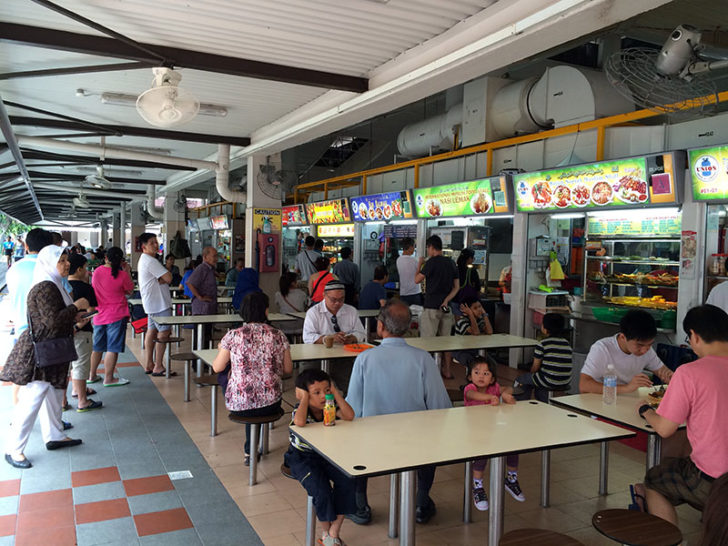
Four tips for visiting a hawker center:
- If you’re unsure what or where to eat, just find the longest line! You could see two shops that look similar with identical prices, but one has a dozen people waiting. There’s a good reason. 😉
- Feel free to mix and match, but you’ll need to buy each dish from a different stall. Some stalls specialize beverages, and I usually get a lime juice to drink with whatever I’m eating.
- Bring your own napkins. Most people use packs of tissues that you can buy in advance from a corner store.
- Historically you could leave your tray and someone would clean it up for you. These days it is more common to see signs for a tray return station.
My Street Food Recommendations
Everyone who visits Singapore should try chicken rice. It’s almost a national dish but has very simple presentation: sliced chicken served over rice that was boiled in chicken broth, usually accompanied by some chili sauce and cucumber or other vegetables. Tian Tian Hainanese Chicken Rice in the Maxwell Hawker Centre has a reputation for some of the best chicken rice in the city, but almost anywhere you visit will be good.
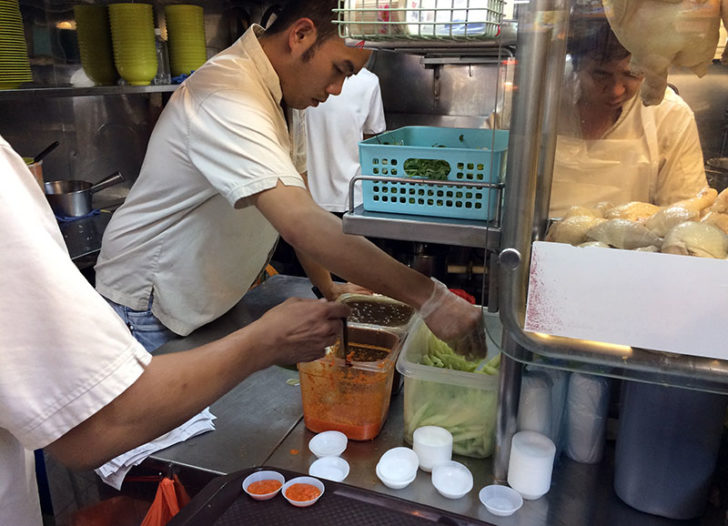
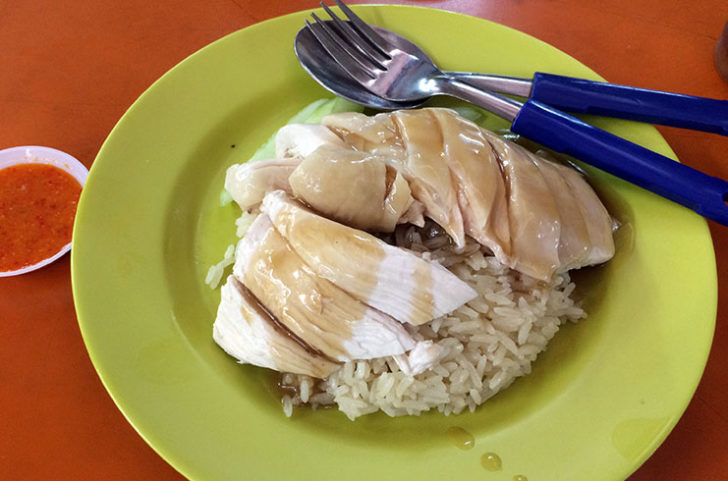
Hawker centers are learning to adjust to a changing city. Many people now visit indoor food courts located inside shopping centers. While these can be good, they are often run by chains and aren’t nearly as much fun to explore. Three of my recommendations are Maxwell Centre (located in Chinatown, where most tourists go), Tiong Bahru (one of the oldest and the site of the first public housing developments), and Changi Village Food Centre (near the airport and the ferry to Pulau Ubin).
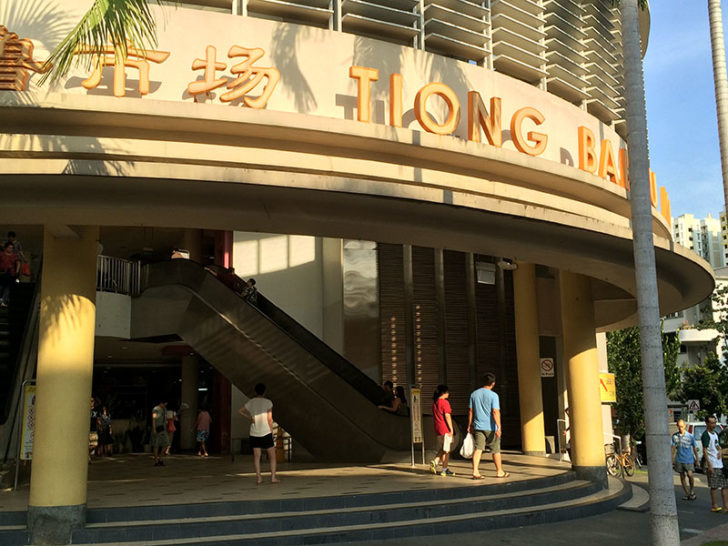

The World Street Food Congress
There is an ongoing effort to retain hawker centers as a vibrant element of Singaporean culture. The success of the city-state has given young people more opportunities besides the family business. Running a stall has also become less economic in light of rising real estate demand, reduced subsidies, and greater competition from indoor chains.
I was fortunate that my visit coincided with the second World Street Food Congress, which is trying to promote the culture of “street food” wherever it’s served, whether on the sidewalk or in shops. Dozens of chefs were attending from around the world, including a few from the United States (although I wasn’t about to wait in line for a churro, no matter how famous).
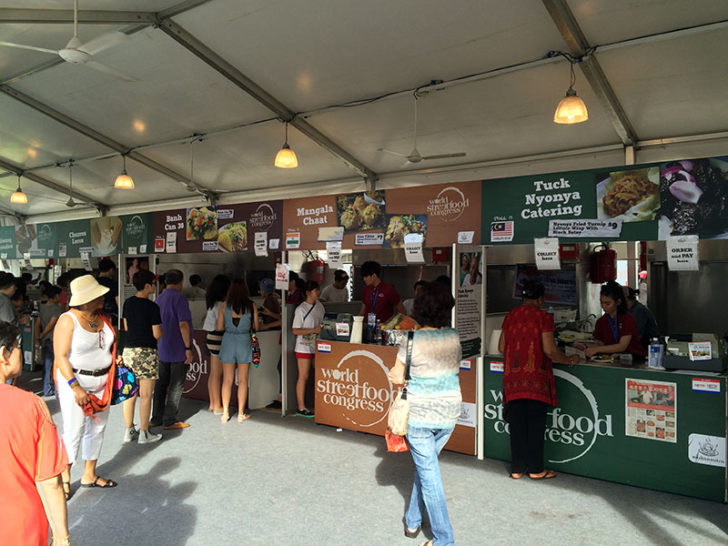
One benefit of the WSFC is that the stalls were much more open than those at a traditional hawker center, so much of the cooking process was on display. There was also no duplication in the menu. Everyone had a different dish to share.
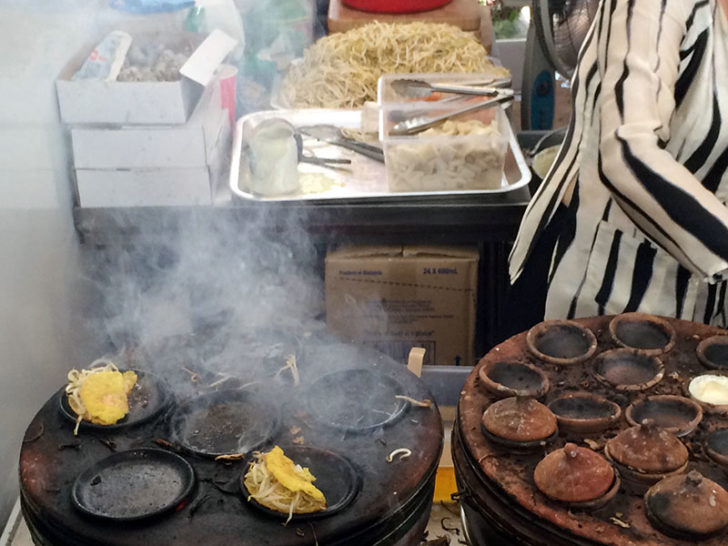
Some of the food I tried was very similar to things at home: crepes, fried seafood, etc. Other things were completely foreign. I didn’t even know noodles were a part of Indian cuisine, but our guide told us this particular dish, laksa, was invented in Singapore using Chinese noodles and Indian spices. It’s a great example of how the mix of different cultures has inspired new ideas in Singapore.
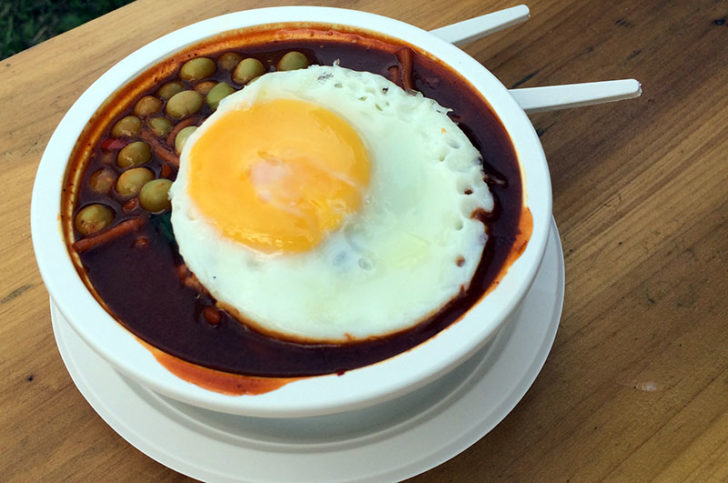
Yes, Singapore Has Real Restaurants
I went out of my way to visit as many food stalls and hawker centers as I could, but our group also ate at several restaurants during the trip. I’ll briefly review three of my favorites (a fourth will be included in a later post).
On our second day we had a relatively formal lunch at Mamanda, which served a variety of Malaysian cuisine on large platters. Including quail eggs, beef lung, various bean sprouts, and a few other options, every preparation was unique to me even if I’d had a few of the ingredients before. But by far my favorite was the dessert, a black bean pudding with coconut milk that I quickly wolfed down.
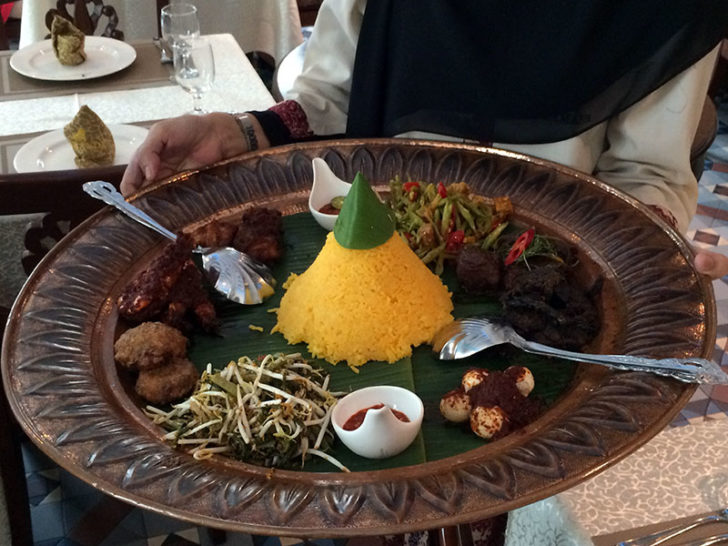
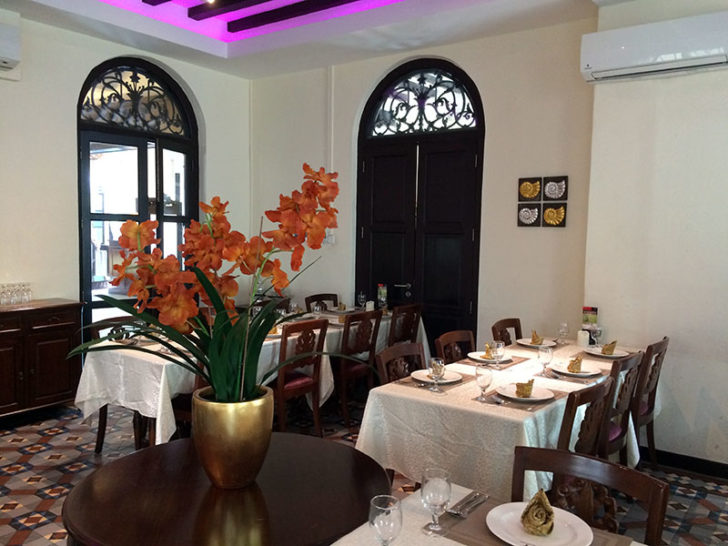
Mamanda is located adjacent to the Malay Heritage Center (built as a palace for the original ruler of Singapore after acceding to British Rule) and only a block from the Sultan Mosque. Both are places I recommend you visit if it’s your first time to the city. The Arab Quarter is one of the most vibrant in the city and a great place to explore. Some of the narrowest streets are found here, crammed with shops selling bolts of cloth and finished dresses.
Dinner the next night took us to Jumbo Seafood, a large indoor/outdoor restaurant chain near the nightlife of Clark Quay and known for its chili crab. Though not my favorite, it is another famous Singaporean dish. Chili crab isn’t actually very spicy, getting the name because the crab is served in a mixture of tomato and chili sauces. What it is known for is being very, very messy. If you’re worried, don’t be. While you have the option to crack open the legs, most of the crab meat has already been removed and mixed in with the sauce. Let someone else get messy as you scoop it up with small buns.
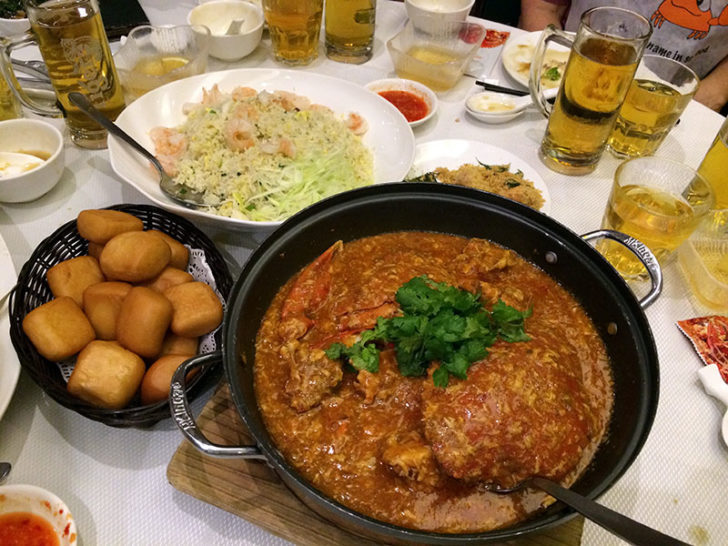
Finally, we all loved our food on the last evening at Char, a small hole-in-the-wall serving Cantonese-style roast meats, including char siew, roast duck, and roast pork belly. Char’s version of char siew is completely different from what we were used to, slathered in a thick, dark sauce that reminded me of Mexican mole more than Chinese food. But it was good, as were the crispy roast duck and pork belly and a half dozen other side dishes. I’m not a restaurant critic, so read the New York Times review if you’re not convinced.
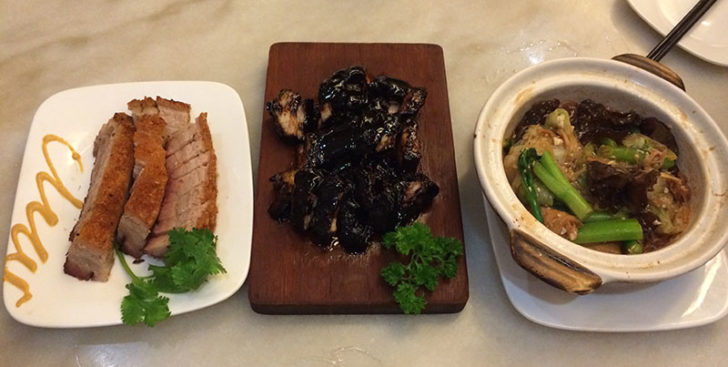
After dinner at Char, head to the nearby Geylang district known for many large durian fruit stalls that stay open late at night. This stinky fruit is definitely an acquired taste. Geylang is also a red light district with a reputation for prostitution (which is legal and tightly regulated in Singapore). I was a little disappointed that, despite prominently listing “ladies of the night” on the official itinerary, we didn’t see any during two separate visits. 🙁
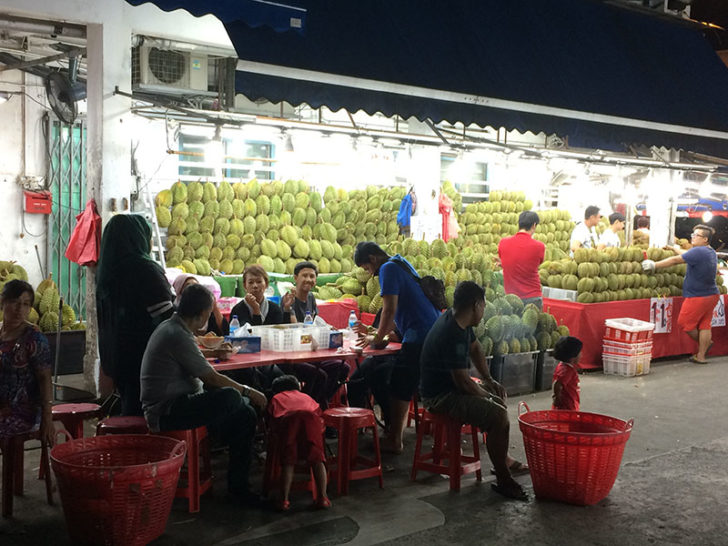
No Lack of Choice for Food in Singapore
Wherever I went in Singapore I knew there would be good food — and usually cheap, good food. The only question was the opportunity cost. Could I have gotten a better version of chicken rice over there? What cuisine should I eat today? Can I pack some of this to take with me instead of eating airplane food? These are all good problems to have as far as I’m concerned.
If you do nothing else in the city, you could probably occupy yourself on a trip to Singapore just by eating!
Full Disclosure: Singapore Tourism Board provided air and ground transportation, accommodation, meals, and a guide during my visit to Singapore. I received no other compensation, and STB did not review or recommend specific content prior to publication.

